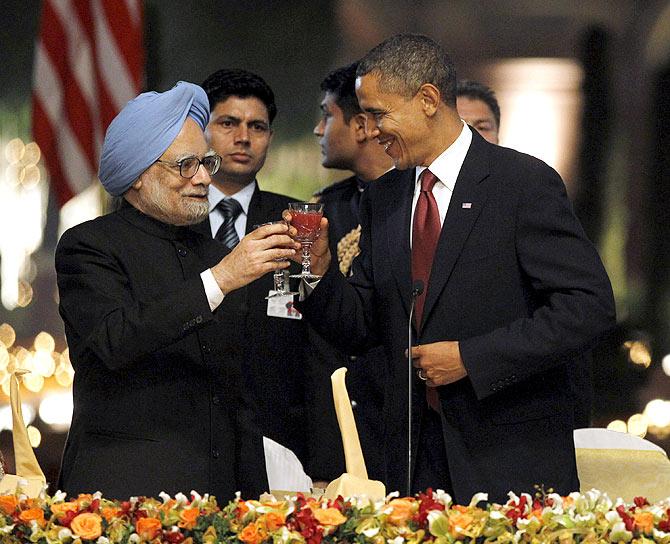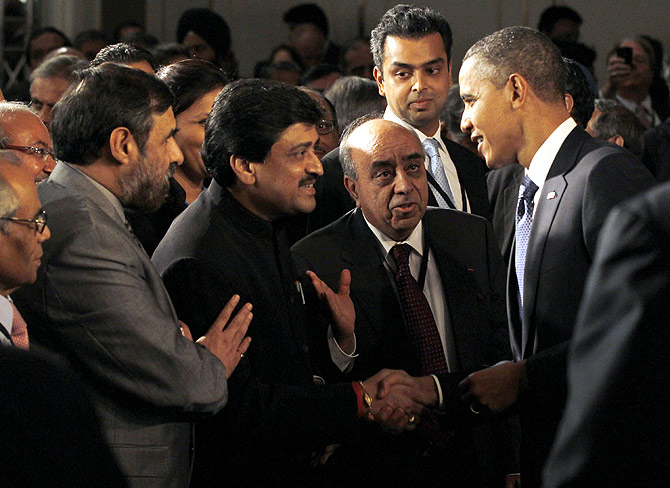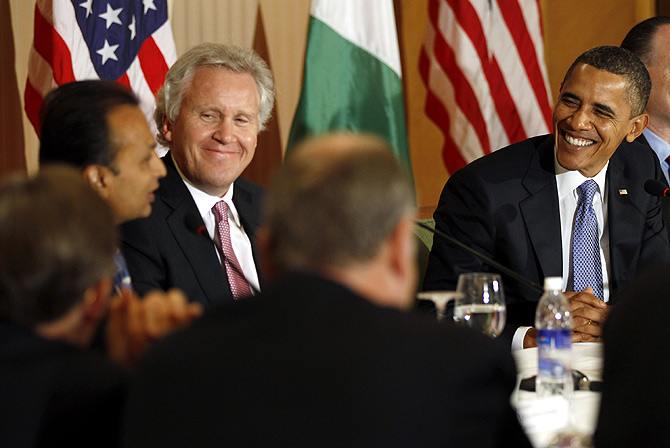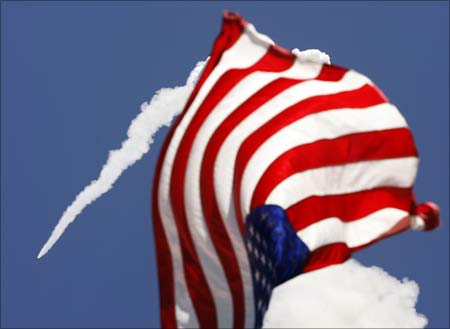Photographs: Jason Reed/Reuters BS
As the Office of the US Trade Representative (USTR) turns its lens on India’s intellectual property and patents regime, Business Standard brings you what Arvind Subramanian, columnist and economist, told the USTR on the way forward.
The main aim of the submission is to set the broader context and to map the contours of a possible solution to tensions between the two countries on intellectual property (IP) issues.
The key policy message is that USTR desist from designating India as a priority foreign country and instead pursue, along with the new Indian government, the approach proposed below.
This hearing comes at a critical juncture. On May 16, a fortnight after the release of USTR’s Special 301 report, a new government will take office in India, intent on reviving the investment climate for domestic and foreign business, and keen on restoring US-India trade and economic relations.
At such a moment of transition, potentially transformational, designating India as a priority foreign country would be a serious mistake and have a number of unfortunate consequences.
...
The thorn in India-US business ties
Photographs: Jason Reed/Reuters BS
- Placing India in the same category with Ukraine as the only post-WTO countries to be accorded priority-foreign-country designation would spark adverse reactions in India and around the world, and raise serious questions about the institutions and processes of US economic diplomacy
- As such, the designation would further set back, possibly irretrievably, relations between two countries that have common strategic and economic interests — substantial and long term - and that need a constructive, new dynamic to help realise the relationship’s full potential
- The unilateral nature of the designation, combined with the fact that intellectual property developments in India have comprised both the positive and restrictive (described below), carries this risk: That the US will be seen as the deviant from international trade norms rather than India as the deviant from international IP norms
- The designation risks holding the broader trade and indeed strategic relationship —characterised by vibrant and robust integration in goods, services, and foreign investment —hostage to sectoral (i.e. intellectual property) interests. The US is facing a similar charge in its negotiations on the Trans-Pacific Partnership
This submission is in two sections. Section one briefly describes developments in intellectual property in India. Section two proposes a way forward for the two countries to settle issues in intellectual property, focusing on patent protection.
...
The thorn in India-US business ties
Image: U.S. President Barack Obama (R) and General Electric's CEO Jeffrey Immelt (3rd L) listen to Reliance Group's Anil Ambani (L) at the U.S.-India Business and Entrepreneurship Summit in Mumbai.Photographs: Jason Reed/Reuters
Broad context and recent developments
In implementing the World Trade Organization’s TRIPs (Trade-related Intellectual Property Rights) agreement, India’s domestic patent law was strengthened from virtually no protection for pharmaceutical product patents to some protection.
But recent rulings and the underlying Indian law still tend to favour weaker rather than stronger protection of IP. This reflects the strength of the generic drug industry and of consumer groups advocating affordable health care.
But, reflecting India’s TRIPs commitments and its international obligations, rulings have also taken into account the need for India to contribute its fair share towards financing the costs of global research and development.
The challenge for India will be to ensure the law does not get out of step with the demands of a country that needs foreign investment and new technologies.
Some of the strengthening of India’s patent regime will occur organically as India grows rapidly and as technology and skill become more important drivers of growth.
India is transitioning from a development stage of being a net user of technology (which favoured weak IP protection) to one of being both a user and producer of technology (which favours stronger IP protection). The drug industry, too, has evolved from exclusively comprising generic manufacturers to one with greater representation of research and development-based companies.
Recent complaints against India can be summarised as the alleged dilution of the intellectual property of foreign patent owners in the pharmaceutical sector. This dilution has taken the form of patent denial and revocation (Glivec), actual compulsory licensing (Nexavar), and offending provisions in India’s patent law notable Section 3 (d) and compulsory licensing for non-working.
How should these actions be assessed? They can be grouped into three categories.
...
The thorn in India-US business ties
Image: Not all IP-related actions have been protectionist or inimical to foreigners.Photographs: Reuters
Positive developments
Not all IP-related actions have been protectionist or inimical to foreigners. Unnoticed has been a very positive development, namely due process. India has provided due process for foreign companies and patent holders comparable to those in advanced democracies.
This was especially true in the Novartis patent denial case and also in the Nexavar compulsory licensing case. Patent offices have decided on patents and compulsory licensing granted to Indian companies; their verdicts have been challenged before an independent appellate body, whose verdicts have in turn been contested in the courts.
In every instance, the deciding authority has reviewed the arguments and facts, drawn on evidence, relied upon domestic and foreign precedents, and explained its decisions. Even if outcomes have gone against foreign companies, there can be little doubt about procedure. And in a country notorious for interminable delays in administrative and judicial procedures, patent-related cases have been decided in timely fashion.
Moreover, balance and fairness toward foreigners and to the demands of intellectual property rights have not been ignored. For example, the Supreme Court decided to take on the Novartis case instead of waiting for the lower courts out of concern that delays could cut into the life of the patent.
Also, when deciding on the compulsory licensing fee that generic drug makers should pay Bayer (the German maker of the cancer drug Nexavar) the Indian patent office opted for the highest end of the range recommended by the World Health Organization (WHO). In the subsequent review, the appellate body increased this fee further. And, several recent cases have been decided in favour of higher protection of patents owned by foreign pharmaceutical companies (e.g. Bristol Myers’ Dasatinib; Roche’s Herceptin, and Schering’s compound for treating heart disease).
Further, critics have suggested that India is a deviant for being the only country where Novartis’ claim has been rejected. But it is overlooked that even in the US, the Novartis application — which was really for a successor version of Glivec — was in fact first rejected by the patent office, only for a higher authority to overturn the initial ruling. Seen in this light, the Novartis decision seems less of an outlier than portrayed.
The Indian verdict, like that of the US patent office, may well be more within the range of reasonable interpretations of what constitutes patentability than has been asserted by critics.
...
The thorn in India-US business ties
Image: If the Indian IP regime is to be compared with those in industrial countries or the richer trading partners of the US, it will fall short.Photographs: Reuters
Restrictive developments: In contrast, certain aspects of Indian patent law such as Section 3 (d) and compulsory licensing for non-working are problematic. Apart from the fact that very few countries have the equivalent of the 3 (d) provision in their law and that defining efficacy can be arbitrary there are other policy tools that can help India address frivolous patenting. And compulsory licensing for non-working sits uneasily with Article 27.1 of the TRIPs agreement.
Mixed/open developments: In relation to other aspects of the Indian IP regime - especially patent denial and compulsory licensing for providing affordable drugs — however, the prima facie claims of unfairness to foreign holders of IP need to be more carefully assessed. The metrics can be crucial in assessing Indian actions.
If the Indian IP regime is to be compared with those in industrial countries or the richer trading partners of the US, it will fall short. However, on a number of other metrics, the assessment would be different. If the metric is consistency with India’s WTO obligations or comparison with India’s TRIPs regime in a historical perspective, India’s IP regime does not fare badly.
On the latter, the table below shows that most of today’s industrial countries adopted strong pharmaceutical protection when they were roughly 10 to 17 times as rich as India was when it undertook the TRIPs commitments.
Another metric might be an Indian calculus that balances three objectives: contributing to a “fair” share of the fixed costs of genuine global R&D generation (which is consistent with the spirit of the TRIPs agreement), promoting technological development domestically, and providing affordable access to medicines for the domestic population.
This is a more difficult calculus and is at the heart of disagreements about the strength of IP protection in India and other developing countries not least because, as the last column of the table shows, India’s level of development is still substantially below that in industrial countries.
...
The thorn in India-US business ties
Image: India could commit to a stay on government-initiated compulsory licences.Photographs: Reuters
Possible way forward
Resolving tensions on intellectual property is critical to the broader economic relationship. Is there a way forward? Yes but each side must exhibit flexibility.
What India might do
In the short run, as a signal of good intentions and to clear the air, India could commit to a stay on government-initiated compulsory licences (especially for drugs that are not on the WHO’s essential drugs list).
Beyond the short run, the following actions could be contemplated.
First, India could consider eliminating the additional efficacy requirement for patentability in Section 3 (d) of its patent law. This is an unnecessary red rag to the bull. Apart from the fact that very few countries have this provision in their law and that defining efficacy can be arbitrary, there are other policy tools that can help India address frivolous patenting.
In the Supreme Court ruling on Glivec, for example, the court could have upheld the earlier ruling denying the patent even without recourse to the efficacy provision.
Second, India should give serious consideration to eliminating or severely narrowing the grant of compulsory licences for non-working. In the area of pharmaceuticals where compulsory licences are most frequently employed, a non-working provision for a country such as India is either misguided or probably a non-credible threat. It is misguided because it is premised on the view that a domestic monopoly is significantly better than an import monopoly.
While this may be true generally because local production generates positive technological spillovers, in the case of pharmaceuticals, this is less true because technologies are easily copyable.
On the other hand, where technologies are not copyable, the threat of compulsory licensing may not be credible: Even if the patent owner refuses to comply with the provision, alternative sources of production may not be easy to find.
For India, the most important reason for using compulsory licensing is to ensure cheaper access to essential drugs which a non-working provision does not help accomplish.
...
The thorn in India-US business ties
Image: Roberto Azebedo, new Director-general of the World Trade Organization.Photographs: Denis Balibouse/Reuters
But most importantly, India and the US need to create a mechanism, possibly permanent, to discuss the broader issue of how and how much India should pay for the fixed costs that goes into the process of R&D.
The spirit of the TRIPs agreement was that all countries, especially the larger developing ones, would contribute their fair share of financing the R&D costs associated with technology development. A corollary being that as they grew rapidly and became larger markets, this share would also rise over time.
The best way to do this would be through tiered pricing/price discrimination, whereby pharmaceutical companies charged lower prices in India compared to prices in the US. It might perhaps be necessary to distinguish drugs that are essential and used predominantly by the poorer segments of the population from drugs (for example, cancer drugs) that are more widely used.
Other ways to achieve such tiered pricing would include for example, higher remuneration for compulsory licences and also for voluntary licences.
In this regard, a model of cooperation between global pharmaceutical companies and developing countries is emerging that should be watched closely.
A California-based pharmaceutical company - Gilead Sciences Inc - and a number of Indian companies are entering into a partnership based on effective protection of IP combined with tiered pricing and extensive licensing to domestic companies that ensures better diffusion of IP products at affordable prices in India while ensuring a decent return for the innovating company.
Finally, India may also have to consider using global best practices in patent grant to improve patent quality without the need to use blunt and unique provisions related narrowly to therapeutic efficacy of new chemical forms.
...
The thorn in India-US business ties
Photographs: Denis Balibouse/Reuters
What the US might do
But there must also be a quid pro quo from the US side on patents. First, the US could acknowledge the positive developments in India related to due process. One way to operationalise this would be to change the narrative about India in the US that is currently uniformly negative. The US might consider offering carrots and not just deploying carrots. Thus, complaints against India could be reduced. One carrot might be to take India off the priority watch list under Section 301.
Second, if India does not address the problems created by Section 3 (d) of the patent legislation or by compulsory licensing for non-working, the US should consider initiating WTO disputes against India.
As I argued in recent Congressional testimony: “… the US should address frictions and conflict through dialogue and where Indian policy is egregiously protectionist address it through multilateral dispute settlement procedures… This approach is desirable for a number of reasons. India takes its WTO obligations very seriously and has had a very good track record of implementing WTO dispute settlement rulings.… In fact, it is not widely recognised that arguably the most important and sweeping reform of Indian trade policy occurred because of a WTO dispute panel — initiated by the US — that ruled against India’s quantitative restrictions on consumer goods. These restrictions were severe in intensity and very broad in scope.”
For the US, the virtue of using WTO dispute settlement is that it would be diplomatically and politically less confrontational than unilateral and bilateral actions, would reassure the world of its faith in rule-based multilateral institutions, and above all, would bolster the legitimacy of its substantive claims about other countries’ IP laws. On the other side, it might be easier for India to change problematic aspects of its IP legislation pursuant to WTO rulings than unilaterally or in response to bilateral US pressures.
Third, the US should temper some of its demands on IPR issues, such as lengthy regulatory data protection, covering of dosage forms or minor chemical variations, or patent linkage, as demanded in US FTAs with others, while respecting the WTO Doha Declaration on Public Health.
Fourth, there must be some agreement that sharing the costs of R&D should cover genuine cases of R&D incurred rather than frivolous ever-greening and patents based on minor changes.
Fifth, one possible avenue for the US government to explore is the introduction of positive measures to encourage policies of lower licensing and equitable contribution to fixed costs of R&D through tax and other incentives.
A specific suggestion was made in Scherer and Watal (2002) to amend a provision in Section 170 of the US Internal Revenue Code that permits deductions if the amount is used by the donee solely for the care of the ill, the needy or infants anywhere in the world so as to exclude the 10% deduction limit on taxable income, should be pursued. This would make differential pricing or voluntary licensing at less than commercial rates an attractive and sustainable proposition for US-based R&D companies.
Finally, the US could also consider giving appropriate incentives to its companies to enter into R&D collaborations with Indian companies.
...
The thorn in India-US business ties
Image: American companies started becoming vocal about India's intellectual property laws and patents regime.Photographs: Mark Blinch/Reuters
What is USTR?
Established as the Office of the Special Trade Representative under the Trade Expansion Act of 1962, the United States Trade Representative (USTR) is part of the Executive Office of the US President.
It is the government agency responsible for developing and recommending American trade policy to the US President, conducting trade negotiations at bilateral and multilateral levels, and coordinating trade policy within the government. With about 200 employees, the USTR has offices in Geneva and Brussels.
What is Special 301?
Special 301 is a trade and industry practices report maintained by the Office of the US Trade Representative. In the report, the US designates certain countries under two categories – ‘Priority Foreign Country’ and ‘Priority Country’.
This is meant for IPR violators and offenders. The first designation is meant for countries which are the worst offenders and might face trade sanctions in future. The second category is for countries whose intellectual property regimes are deemed of concern.
India was previously designated as a ‘Priority Foreign Country’ in 1994 under President Bill Clinton. This year, too, there are chances that India might be labelled a ‘Priority Foreign Country’, although India has been on the list of ‘Priority Country’ since 1974.
India’s IPR woes with the US
American companies started becoming vocal about India’s intellectual property laws and patents regime since the visit of US President Barack Obama to India in 2010. While some US lobby groups had been complaining to the Office of the US Trade Representative against India, the matter was being managed diplomatically. On the other hand, India was miffed with the US for raising the professional visa fees.
However, in 2011, the US dragged India to the World Trade Organization’s Dispute Settlement Body over poultry imports, which India had banned from the US and other countries where avian influenza was detected. Following this, India also filed an official complaint against the US over import of steel rods.
Matters accentuated last year in April, when the Supreme Court rejected the patent application made by Swiss company Novartis for its cancer drug, Glivec. Before this incident, US companies were already upset since the controller general of patents, designs and trademarks decided to grant a compulsory licence to Natco Pharma to produce and sell generic versions of Bayer-Onyx’s cancer drug, Nexavar.
Arvind Subramanian is Dennis Weatherstone Senior Fellow, Peterson Institute for International Economics and Senior Fellow, Center for Global Development.











article